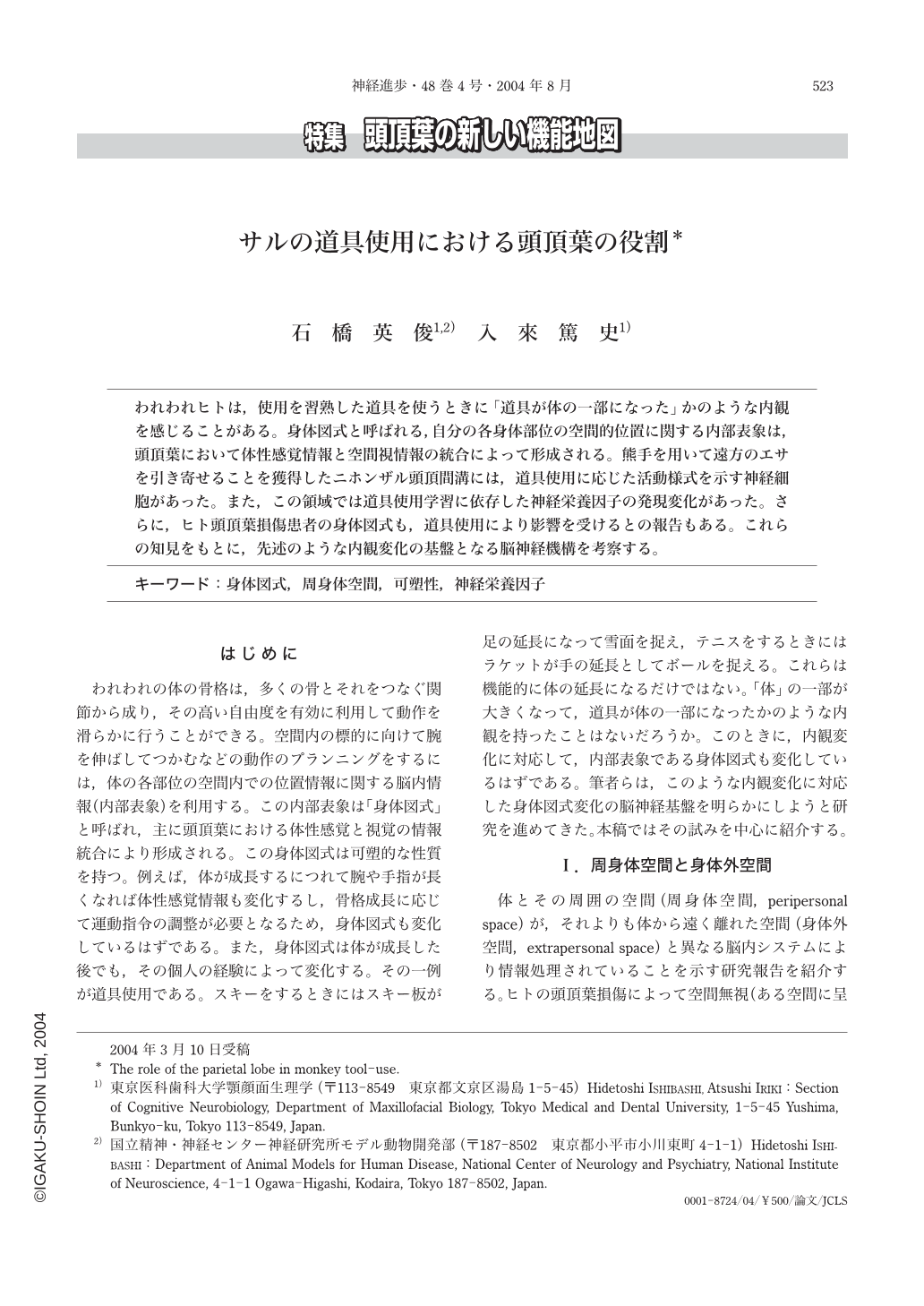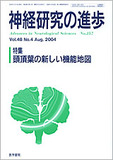Japanese
English
- 有料閲覧
- Abstract 文献概要
- 1ページ目 Look Inside
われわれヒトは,使用を習熟した道具を使うときに「道具が体の一部になった」かのような内観を感じることがある。身体図式と呼ばれる,自分の各身体部位の空間的位置に関する内部表象は,頭頂葉において体性感覚情報と空間視情報の統合によって形成される。熊手を用いて遠方のエサを引き寄せることを獲得したニホンザル頭頂間溝には,道具使用に応じた活動様式を示す神経細胞があった。また,この領域では道具使用学習に依存した神経栄養因子の発現変化があった。さらに,ヒト頭頂葉損傷患者の身体図式も,道具使用により影響を受けるとの報告もある。これらの知見をもとに,先述のような内観変化の基盤となる脳神経機構を考察する。
The parietal cortex receives inputs conveying intrinsic information about the current posture and extrinsic information about the spatial locations and movements of objects and our own body parts via a dorsal stream of visual information processing. Integration of these two modes of information create the multimodal representations of the body-centered space or the body schema, a representation of the spatial relations among the parts of the body, which will be used for motor planning such as reaching or grasping.
A body schema is not static, but changes plastically depending on one's experience. For example, it can be altered through tool-use. When humans repeatedly use a tool, our body schema alters until we feel introspectively that the tool has become a part or extension of the body. To examine the neural basis for the dynamic properties of the body schema, we trained macaque monkeys to use rake-shaped tool to extend their reaching distance. After the training, response properties of the neurons in the anterior(medial)bank of the intraparietal sulcus(IPS, the posterior extension of the primary somatosensory area)markedly changed. In naive animals, neurons in this area had essentially somatosensory responses, but scarcely, if any, visual responses. After the training was completed, a group of bimodal neurons appeared which exhibited clear visual responses in addition to the somatosensory responses. Around the somatosensory receptive field was formed the visual receptive field defined as a territory in the space where a neuron responded to the moving visual stimuli. Analysis of these bimodal neurons related to tool-use revealed that the visual receptive field expanded when monkeys used tools to retrieve distant objects, but the modification was never induced when the monkeys simply held a tool as an external object. The neur-ons showing this property existed in the anterior bank and in the posterior bank of the intraparietal sulcus, especially where caudally adjacent to the somatosensory forearm area.
One possible mechanism for altering the body schema through tool-use is that projections from the vision-related cortex form new synapses with neurons processing somatosensory signals in the IPS region. To clarify the molecular basis for the development of new synapses, we examined the role of neurotrophins, that were involved in the neural development, neuronal survival, and neural plasticity in mature brain including learning and memory. The tissue from the IPS region contralateral to the tool-using hand contained more mRNA for BDNF, its receptor trkB, and NT-3 than the tissue from the corresponding ipsilateral region. The induced expression of the above genes was observed for the monkeys who were learning the use of the tool but not observed for the monkeys who had already acquired. Neurotrophins secreted at the IPS region may attract the neural projection from the vision-related cerebral cortex when a monkey is learning to use the tool but not executing the tool-use. Further localization analysis revealed that the highest expression of BDNF was seen in the region of the anterior bank of IPS posteriorly adjacent to the somatosensory forearm and shoulder region in area 3b. These results are consistent with and may be the basis for our introspection that repeatedly used tool become a part, or extension, of the body part(the arm or shoulder in this case).

Copyright © 2004, Igaku-Shoin Ltd. All rights reserved.


